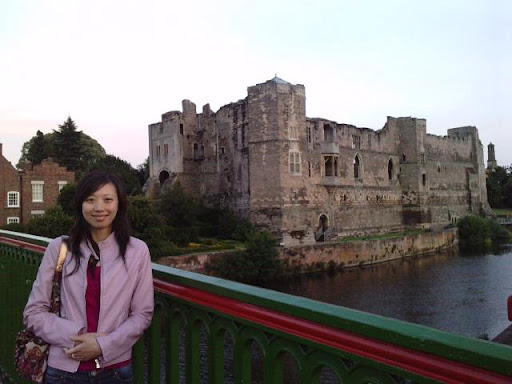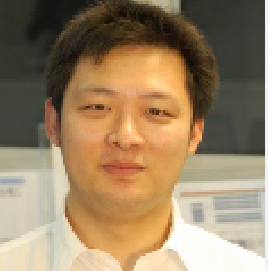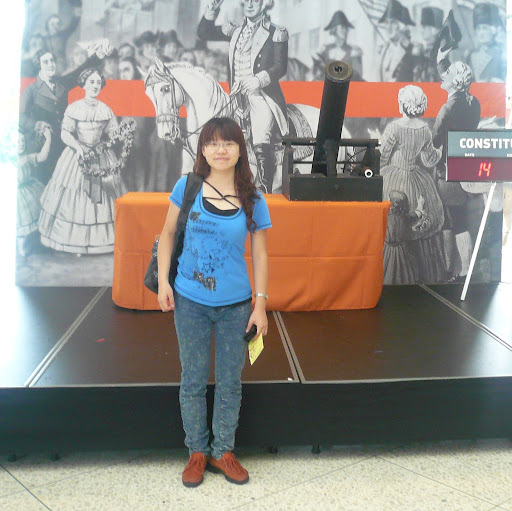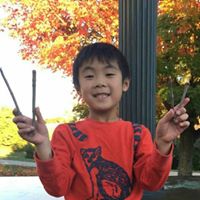Rong R Fan
age ~53
from Redwood City, CA
- Also known as:
-
- Yan R Fan
- Ron G Fan
- Rong San
- Rong Fang
- Fan Yan
- Phone and address:
- 1037 Rockport Ave, Redwood City, CA 94065
Rong Fan Phones & Addresses
- 1037 Rockport Ave, Redwood City, CA 94065
- Vashon, WA
- South Lake Tahoe, CA
- San Jose, CA
- Charlottesville, VA
- Foster City, CA
- Los Altos, CA
- El Dorado, CA
- Arlington, MA
Medicine Doctors

Rong Fan
view sourceSpecialties:
Anatomic Pathology & Clinical Pathology
Work:
IU Health Pathology Laboratory
350 W 11 St RM 4010, Indianapolis, IN 46202
3174916000 (phone), 3174916419 (fax)
350 W 11 St RM 4010, Indianapolis, IN 46202
3174916000 (phone), 3174916419 (fax)
Education:
Medical School
Beijing Med Univ, Beijing City, Beijing, China
Graduated: 1991
Beijing Med Univ, Beijing City, Beijing, China
Graduated: 1991
Languages:
English
Description:
Dr. Fan graduated from the Beijing Med Univ, Beijing City, Beijing, China in 1991. He works in Indianapolis, IN and specializes in Anatomic Pathology & Clinical Pathology. Dr. Fan is affiliated with Indiana University Health Methodist Hospital, IU Health University Hospital and Riley Hospital For Children At Indiana University Health.
Resumes

Director Of Research
view sourcePosition:
Director of Research at Gifford Fong Associates
Location:
San Francisco Bay Area
Industry:
Financial Services
Work:
Gifford Fong Associates since Sep 2007
Director of Research
Credit Suisse 2005 - 2006
AVP
Director of Research
Credit Suisse 2005 - 2006
AVP
Certifications:
Financial Risks Manager (FRM)

Software Engineer
view sourcePosition:
Software Engineer at Assurant Solutions
Location:
Miami, Florida
Industry:
Telecommunications
Work:
Assurant Solutions - Assurant since Jul 2011
Software Engineer
Software Engineer

Rong Fan
view sourceLocation:
United States

Research At Lenovo
view sourcePosition:
research at lenovo
Location:
San Francisco Bay Area
Industry:
Computer Software
Work:
lenovo
research
research
Us Patents
-
Methods Of Fabricating Nanostructures And Nanowires And Devices Fabricated Therefrom
view source -
US Patent:6996147, Feb 7, 2006
-
Filed:Mar 29, 2002
-
Appl. No.:10/112698
-
Inventors:Arun Majumdar - Orinda CA, US
Ali Shakouri - Santa Cruz CA, US
Timothy D. Sands - Moraga CA, US
Peidong Yang - Berkeley CA, US
Samuel S. Mao - Berkeley CA, US
Richard E. Russo - Walnut Creek CA, US
Henning Feick - Kensington CA, US
Eicke R. Weber - Oakland CA, US
Hannes Kind - Schaffhausen, CH
Michael Huang - Los Angeles CA, US
Haoquan Yan - Albany CA, US
Yiying Wu - Albany CA, US
Rong Fan - El Cerrito CA, US -
Assignee:The Regents of the University of California - Oakland CA
-
International Classification:H01S 5/00
-
US Classification:372 43, 372 45, 438 22, 438 45
-
Abstract:One-dimensional nanostructures having uniform diameters of less than approximately 200 nm. These inventive nanostructures, which we refer to as “nanowires”, include single-crystalline homostructures as well as heterostructures of at least two single-crystalline materials having different chemical compositions. Because single-crystalline materials are used to form the heterostructure, the resultant heterostructure will be single-crystalline as well. The nanowire heterostructures are generally based on a semiconducting wire wherein the doping and composition are controlled in either the longitudinal or radial directions, or in both directions, to yield a wire that comprises different materials. Examples of resulting nanowire heterostructures include a longitudinal heterostructure nanowire (LOHN) and a coaxial heterostructure nanowire (COHN).
-
Sacrificial Template Method Of Fabricating A Nanotube
view source -
US Patent:7211143, May 1, 2007
-
Filed:Dec 8, 2003
-
Appl. No.:10/731745
-
Inventors:Peidong Yang - Berkeley CA, US
Rongrui He - Berkeley CA, US
Joshua Goldberger - Berkeley CA, US
Rong Fan - El Cerrito CA, US
Yi-Ying Wu - Albany CA, US
Deyu Li - Albany CA, US
Arun Majumdar - Orinda CA, US -
Assignee:The Regents of the University of California - Oakland CA
-
International Classification:C30B 23/00
C30B 25/00
C30B 28/12 -
US Classification:117 84, 117 87, 117 88, 117106, 117920, 977734, 977742, 977762, 977855
-
Abstract:Methods of fabricating uniform nanotubes are described in which nanotubes were synthesized as sheaths over nanowire templates, such as using a chemical vapor deposition process. For example, single-crystalline zinc oxide (ZnO) nanowires are utilized as templates over which gallium nitride (GaN) is epitaxially grown. The ZnO templates are then removed, such as by thermal reduction and evaporation. The completed single-crystalline GaN nanotubes preferably have inner diameters ranging from 30 nm to 200 nm, and wall thicknesses between 5 and 50 nm. Transmission electron microscopy studies show that the resultant nanotubes are single-crystalline with a wurtzite structure, and are oriented along the direction. The present invention exemplifies single-crystalline nanotubes of materials with a non-layered crystal structure. Similar “epitaxial-casting” approaches could be used to produce arrays and single-crystalline nanotubes of other solid materials and semiconductors.
-
Functional Bimorph Composite Nanotapes And Methods Of Fabrication
view source -
US Patent:7303815, Dec 4, 2007
-
Filed:Aug 15, 2003
-
Appl. No.:10/642043
-
Inventors:Peidong Yang - Berkeley CA, US
Matthew Law - Berkeley CA, US
Rongrui He - El Cerrito CA, US
Rong Fan - El Cerrito CA, US
Franklin Kim - Berkeley CA, US -
Assignee:The Regents of the University of California - Oakland CA
-
International Classification:B32B 15/04
G01K 5/68 -
US Classification:428357, 428397, 428401, 428616, 117 87, 977755, 977810, 977811
-
Abstract:A two-layer nanotape that includes a nanoribbon substrate and an oxide that is epitaxially deposited on a flat surface of the nanoribbon substrate is described. The oxide is deposited on the substrate using a pulsed laser ablation deposition process. The nanoribbons can be made from materials such as SnO, ZnO, MgO, AlO, Si, GaN, or CdS. Also, the sintered oxide target can be made from materials such as TiO, transition metal doped TiO(e. g. , COTiO), BaTiO, ZnO, transition metal doped ZnO (e. g. , MnZnO and NiZnO), LaMnO, BaTiO, PbTiO, YBaCuO, or SrCuOand other p-type oxides. Additionally, temperature sensitive nanoribbon/metal bilayers and their method of fabrication by thermal evaporation are described. Metals such as Cu, Au, Ti, Al, Pt, Ni and others can be deposited on top of the nanoribbon surface. Such devices bend significantly as a function of temperature and are suitable as, for example, thermally activated nanoscale actuators.
-
Fluidic Nanotubes And Devices
view source -
US Patent:7355216, Apr 8, 2008
-
Filed:Apr 8, 2004
-
Appl. No.:10/822148
-
Inventors:Peidong Yang - Berkeley CA, US
Rongrui He - El Cerrito CA, US
Joshua Goldberger - Berkeley CA, US
Rong Fan - El Cerrito CA, US
Yiying Wu - Albany CA, US
Deyu Li - Albany CA, US
Arun Majumdar - Orinda CA, US -
Assignee:The Regents of the University of California - Oakland CA
-
International Classification:C30B 23/00
-
US Classification:257200
-
Abstract:Fluidic nanotube devices are described in which a hydrophilic, non-carbon nanotube, has its ends fluidly coupled to reservoirs. Source and drain contacts are connected to opposing ends of the nanotube, or within each reservoir near the opening of the nanotube. The passage of molecular species can be sensed by measuring current flow (source-drain, ionic, or combination). The tube interior can be functionalized by joining binding molecules so that different molecular species can be sensed by detecting current changes. The nanotube may be a semiconductor, wherein a tubular transistor is formed. A gate electrode can be attached between source and drain to control current flow and ionic flow. By way of example an electrophoretic array embodiment is described, integrating MEMs switches. A variety of applications are described, such as: nanopores, nanocapillary devices, nanoelectrophoretic, DNA sequence detectors, immunosensors, thermoelectric devices, photonic devices, nanoscale fluidic bioseparators, imaging devices, and so forth.
-
Methods Of Fabricating Nanostructures And Nanowires And Devices Fabricated Therefrom
view source -
US Patent:7569847, Aug 4, 2009
-
Filed:Jan 20, 2005
-
Appl. No.:11/040664
-
Inventors:Arun Majumdar - Orinda CA, US
Ali Shakouri - Santa Cruz CA, US
Timothy D. Sands - Moraga CA, US
Peidong Yang - Berkeley CA, US
Samuel S. Mao - Berkeley CA, US
Richard E. Russo - Walnut Creek CA, US
Henning Feick - Kensington CA, US
Eicke R. Weber - Oakland CA, US
Hannes Kind - Schaffhausen, CH
Michael Huang - Los Angeles CA, US
Haoquan Yan - Albany CA, US
Yiying Wu - Albany CA, US
Rong Fan - El Cerrito CA, US -
Assignee:The Regents of the University of California - Oakland CA
-
International Classification:H01L 23/29
-
US Classification:257 14, 257 12, 257 19, 257200, 257616, 257653, 257 93, 257E29003, 257E2907, 977762, 977763, 977764, 977765
-
Abstract:One-dimensional nanostructures having uniform diameters of less than approximately 200 nm. These inventive nanostructures, which we refer to as “nanowires”, include single-crystalline homostructures as well as heterostructures of at least two single-crystalline materials having different chemical compositions. Because single-crystalline materials are used to form the heterostructure, the resultant heterostructure will be single-crystalline as well. The nanowire heterostructures are generally based on a semiconducting wire wherein the doping and composition are controlled in either the longitudinal or radial directions, or in both directions, to yield a wire that comprises different materials. Examples of resulting nanowire heterostructures include a longitudinal heterostructure nanowire (LOHN) and a coaxial heterostructure nanowire (COHN).
-
Methods Of Fabricating Nanostructures And Nanowires And Devices Fabricated Therefrom
view source -
US Patent:7569941, Aug 4, 2009
-
Filed:Dec 22, 2006
-
Appl. No.:11/645241
-
Inventors:Arun Majumdar - Orinda CA, US
Ali Shakouri - Santa Cruz CA, US
Timothy D. Sands - Moraga CA, US
Peidong Yang - Berkeley CA, US
Samuel S. Mao - Berkeley CA, US
Richard E. Russo - Walnut Creek CA, US
Henning Feick - Kensington CA, US
Eicke R. Weber - Oakland CA, US
Hannes Kind - Schaffhausen, CH
Michael Huang - Los Angeles CA, US
Haoquan Yan - Albany CA, US
Yiying Wu - Albany CA, US
Rong Fan - El Cerrito CA, US -
Assignee:The Regents of the University of California - Oakland CA
-
International Classification:H01L 29/201
-
US Classification:257798, 257 12, 257 14, 257183, 257616, 257E2907, 257E29245, 977762, 977763, 977765
-
Abstract:One-dimensional nanostructures having uniform diameters of less than approximately 200 nm. These inventive nanostructures, which we refer to as “nanowires”, include single-crystalline homostructures as well as heterostructures of at least two single-crystalline materials having different chemical compositions. Because single-crystalline materials are used to form the heterostructure, the resultant heterostructure will be single-crystalline as well. The nanowire heterostructures are generally based on a semiconducting wire wherein the doping and composition are controlled in either the longitudinal or radial directions, or in both directions, to yield a wire that comprises different materials. Examples of resulting nanowire heterostructures include a longitudinal heterostructure nanowire (LOHN) and a coaxial heterostructure nanowire (COHN).
-
Methods Of Fabricating Nanostructures And Nanowires And Devices Fabricated Therefrom
view source -
US Patent:7834264, Nov 16, 2010
-
Filed:Dec 22, 2006
-
Appl. No.:11/645236
-
Inventors:Arun Majumdar - Orinda CA, US
Ali Shakouri - Santa Cruz CA, US
Timothy D. Sands - Moraga CA, US
Peidong Yang - Berkeley CA, US
Samuel S. Mao - Berkeley CA, US
Richard E. Russo - Walnut Creek CA, US
Henning Feick - Kensington CA, US
Eicke R. Weber - Oakland CA, US
Hannes Kind - Schaffhausen, CH
Michael Huang - Los Angeles CA, US
Haoquan Yan - Albany CA, US
Yiying Wu - Albany CA, US
Rong Fan - El Cerrito CA, US -
Assignee:The Regents of the University of California - Oakland CA
-
International Classification:H01L 35/00
H01L 35/02
H01L 35/12 -
US Classification:136230, 136203, 136205, 1362361
-
Abstract:One-dimensional nanostructures having uniform diameters of less than approximately 200 nm. These inventive nanostructures, which we refer to as “nanowires”, include single-crystalline homostructures as well as heterostructures of at least two single-crystalline materials having different chemical compositions. Because single-crystalline materials are used to form the heterostructure, the resultant heterostructure will be single-crystalline as well. The nanowire heterostructures are generally based on a semiconducting wire wherein the doping and composition are controlled in either the longitudinal or radial directions, or in both directions, to yield a wire that comprises different materials. Examples of resulting nanowire heterostructures include a longitudinal heterostructure nanowire (LOHN) and a coaxial heterostructure nanowire (COHN).
-
Inorganic Nanotubes And Electro-Fluidic Devices Fabricated Therefrom
view source -
US Patent:7898005, Mar 1, 2011
-
Filed:Dec 15, 2008
-
Appl. No.:12/335430
-
Inventors:Peidong Yang - Kensington CA, US
Arunava Majumdar - Orinda CA, US
Rong Fan - Pasadena CA, US
Rohit Karnik - Cambridge MA, US -
Assignee:The Regents of the University of California - Oakland CA
-
International Classification:G01N 27/447
-
US Classification:257200, 257E21108
-
Abstract:Nanofluidic devices incorporating inorganic nanotubes fluidly coupled to channels or nanopores for supplying a fluid containing chemical or bio-chemical species are described. In one aspect, two channels are fluidly interconnected with a nanotube. Electrodes on opposing sides of the nanotube establish electrical contact with the fluid therein. A bias current is passed between the electrodes through the fluid, and current changes are detected to ascertain the passage of select molecules, such as DNA, through the nanotube. In another aspect, a gate electrode is located proximal the nanotube between the two electrodes thus forming a nanofluidic transistor. The voltage applied to the gate controls the passage of ionic species through the nanotube selected as either or both ionic polarities. In either of these aspects the nanotube can be modified, or functionalized, to control the selectivity of detection or passage.
Flickr
Youtube
Googleplus

Rong Fan

Rong Fan

Rong Fan

Rong Fan

Rong Fan

Rong Fan

Rong Fan

Rong Fan

Rong Fan
view source
Rong Fan
view source
Rong Fan
view sourceGet Report for Rong R Fan from Redwood City, CA, age ~53













